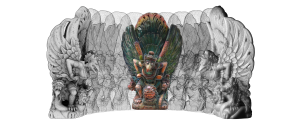3D scanners are getting more and more advanced and more portable and as a result, nearly everything on the planet can now be digitized. Creating useful and meaningful 3D models from reality, however, has traditionally been a challenging and tedious process that is slow and requires expertise and use of multiple and expensive solutions.
A new solution from Autodesk that was just sprang from the lab and is now in public beta is Memento, which aims to simplify the process of working with scanned data from any type of reality capture device and making the process scalable and accessible to a variety of users. It does this by streamlining workflows to create high-definition 3D models from Reality Capture sensors (photos or scans) that involve multiple complex and expensive tools that require expertise and training.
When objects are scanned, the result is often extremely large, heavy meshes that pose a significant challenge for software to process. Memento’s toolkit generates 3D meshes from photos and scans and helps clean up the meshes, detect and fix mesh errors, and prepare and optimize the generated 3D models for Web publishing, for VR/AR, for further digital use, or for 3D printing.
Memento provides users with an easier way to optimize and prepare high-definition 3D meshes for various downstream workflows, and offers an integrated toolset for high-definition 3D printing. The creation process is distributed, the visualization is out-of-core, and the algorithmic tool stack relies on multicore principles, which allows for interactive speed and for viewing the full resolution models.
What really sets Memento apart is its ease of use. Memento’s focused toolset and clean, modern UI can be learned in 20 minutes. This is designed to be accessible to a variety of users who seek high-quality results but might not have technological expertise. Memento eliminates technological complexity and the need for prior knowledge of 3D modeling or CAD, and makes meaningful 3D assets from captured reality.

Autodesk Memento is an end-to-end solution for converting any captured reality input (photos or scans) into high-definition 3D meshes that can be cleaned up, fixed, and optimized for the Web, mobile or 3D printing/fabbing.
How will Memento be used?
Use cases for Memento are varied. In the medical industry, designers could use Memento for designing personalized medical equipment and accessories. The product could also be used to inspect the accuracy of 3D printed objects versus designed objects when 3D printed replacement parts and could allow scientists to compare the difference between two captures over time.
In mechanical design, users of Fusion 360 or Alias could use the new Memento workflow to digitize physical prototypes for further exploration and visualization options, further design, for personalized designs/repairs, to check the fit of designed parts to be added to real objects, as the start of new designs, and for decorative add on’s to CAD models.
For 3D printing, Memento can be used to manage any captured or modeled data without forced downsizing. Easy preparation of any generated-from-reality or imported model for 3D printing (from any other captured reality input or 3D modeling applications). Soon, Memento will be able to import 3D meshes generated in ReCap 360 Photo to clean, fix and prepare them for consumption as meshes in various products, as point clouds in ReCap Pro or for publishing on the web.
Autodesk’s Memento is now available for public beta. Check it out here.
Comments
Post a Comment